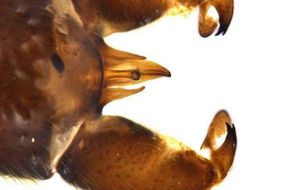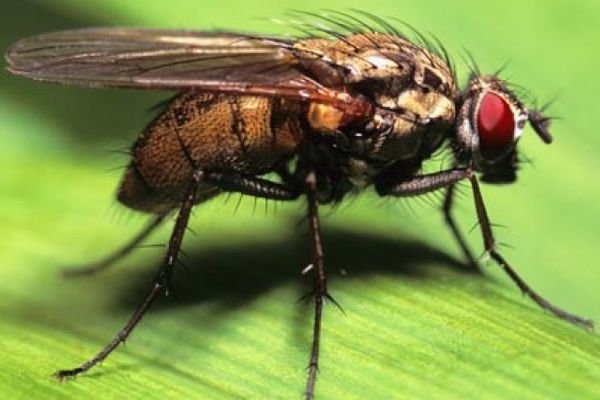
The newest species of crane fly, discovered recently in New South Wales, Australia, has some unusual characteristics — including very tiny wings and a double-barreled penis.
Crane flies are delicate-looking insects with thin, long legs twice the length of their bodies and 3-inch (7.6-centimeter) wingspans. Resembling mosquitoes, they live near the water. There are numerous species of crane flies, but none are quite like Minipteryx robusta, the one with the two-pronged shooter. (The Latin name means "tough tiny wings".)
Advertisement

Environmental scientist Gunther Theischinger, who has discovered some 730 different insect species during his 50-year career, was the one who spotted the anatomically unusual crane fly in Pipers Creek, a body of water in Australia's Kosciuszko National Park. Besides the intriguing forked penis, it sported much smaller wings than other crane flies and was also smaller in size — just 0.59 inches (1.5 centimeters) versus the typical 2.5 inches (6.4 centimeters). Theischinger has a theory as to why the fly is so "well-endowed."
"One possibility is that in the various position changes and twists during crane fly copulation, the lack of functional wings may be a disadvantage. The 'double barreled' penis could possibly compensate by giving the male additional strength to grasp the female," he says in a press statement.
But it's actually Minipteryx robusta's rather ineffective wings that are most compelling to Theischinger and other researchers. There's a known connection between wings and climate in the scientific world — they don't work well in cold, high altitudes because they can't vibrate quickly enough to allow flight.
Theischinger thinks that Minipteryx robusta evolved with downsized wings to allow it to do more walking in the area's cold, windy, high-altitude environment — Pipers Creek sits at 5,128 feet (1,563 meters) and the park's Mount Kosciuszko is Australia's tallest mountain, at 7,310 feet (2,228 meters).
Next up on Theischinger's agenda: finding a female Minipteryx robusta. If he succeeds, who knows what may be doubled on her.
Advertisement

